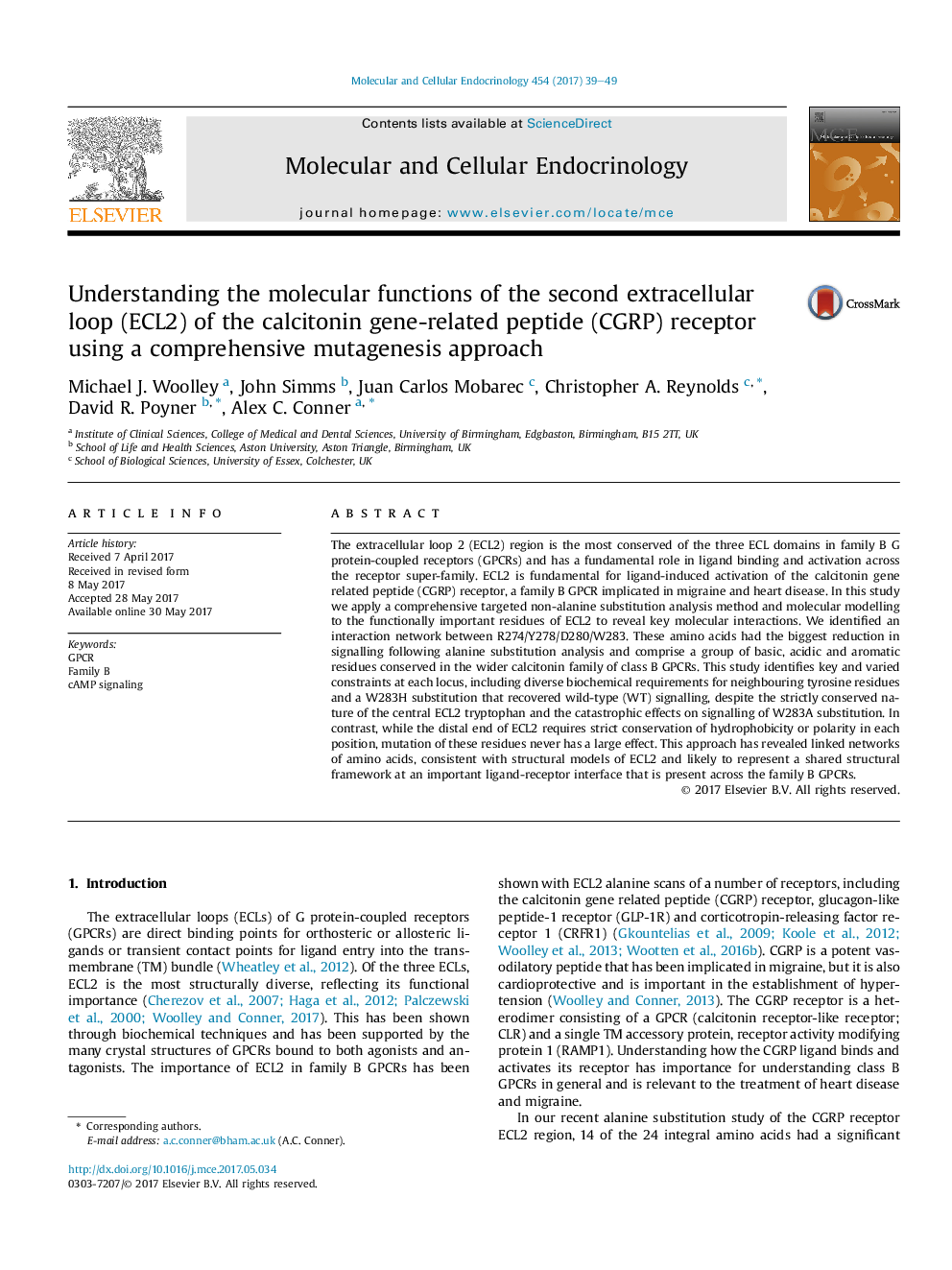| کد مقاله | کد نشریه | سال انتشار | مقاله انگلیسی | نسخه تمام متن |
|---|---|---|---|---|
| 5534114 | 1550825 | 2017 | 11 صفحه PDF | دانلود رایگان |

- The identification of several amino acid constraints within the second extracellular loop (ECL2) of the GPCR component of the CGRP receptor.
- This study provides a platform to begin to formulate some rules for Family B GPCR structure that regulate function.
- The study demonstrates a surprising gain of function substitution. Recovering W283H to wild-type (WT) despite the conserved tryptophan and deleterious W283A substitution.
- The central and the distal regions of ECL2 have distinct functional roles.
- We have shown a linked network of amino acids, likely to represent a shared structural framework at a ligand-receptor interface that is present across the family B GPCRs.
The extracellular loop 2 (ECL2) region is the most conserved of the three ECL domains in family B G protein-coupled receptors (GPCRs) and has a fundamental role in ligand binding and activation across the receptor super-family. ECL2 is fundamental for ligand-induced activation of the calcitonin gene related peptide (CGRP) receptor, a family B GPCR implicated in migraine and heart disease. In this study we apply a comprehensive targeted non-alanine substitution analysis method and molecular modelling to the functionally important residues of ECL2 to reveal key molecular interactions. We identified an interaction network between R274/Y278/D280/W283. These amino acids had the biggest reduction in signalling following alanine substitution analysis and comprise a group of basic, acidic and aromatic residues conserved in the wider calcitonin family of class B GPCRs. This study identifies key and varied constraints at each locus, including diverse biochemical requirements for neighbouring tyrosine residues and a W283H substitution that recovered wild-type (WT) signalling, despite the strictly conserved nature of the central ECL2 tryptophan and the catastrophic effects on signalling of W283A substitution. In contrast, while the distal end of ECL2 requires strict conservation of hydrophobicity or polarity in each position, mutation of these residues never has a large effect. This approach has revealed linked networks of amino acids, consistent with structural models of ECL2 and likely to represent a shared structural framework at an important ligand-receptor interface that is present across the family B GPCRs.
Journal: Molecular and Cellular Endocrinology - Volume 454, 15 October 2017, Pages 39-49